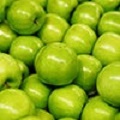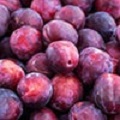Aroma Development in Wine

Wine aromas are classified into 3 categories:
Primary (from the Grapes)
Secondary (from the Winemaking)
Tertiary (from Maturation and Aging)
New aromas appear in different phases of the vinification and evolve or disappear over time.












Primary Aromas (from the Grapes)
Primary aromas are the fresh and fruity aromas derived directly from the grapes.
White grapes can deliver aromas like citrus, apple, stone fruit or melon, depending on the grape variety.
Black grapes can deliver aromas like cherry, red berries and black berries.
Citrus |
Apple |
Stone Fruit |
Melon |
Cherry |
Raspberry |
Strawberry |
Blackberry |
Primary aromas can also iclude floral notes, spices, and sometimes minerals from the soil.
Jasmine |
Honeysuckle |
Rose |
Violet |
Pepper |
Spices |
Licorice |
Flint |
Secondary Aromas (from Winemaking)
Secondary aromas come from the fermentation of the wine (alcoholic and malolactic).
Secondary aromas includes aromas from yeast (like bread or pastry), oak (vanilla, toast, smoke), and malolactic fermentation (buttery, creamy notes).
Bread |
Butter |
Oak |
Vanilla |
Tertiary Aromas (from Aging)
Tertiary aromas occurs during bottle aging or barrel aging, basically due to the supply of oxygen.
Oxygen causes chemical actions that modify and transform the aromas.
The results in more complex, subtle, and layered aromas and flavors.
For wines aged in barrels, aromas of toasted or roasted wood and vanilla appear.
For wines aged in bottles, ripe and stewed fruit, leather in red wines, and nuts and honey in whites.
Almond |
Honey |
Forest Floor |
Tobacco |